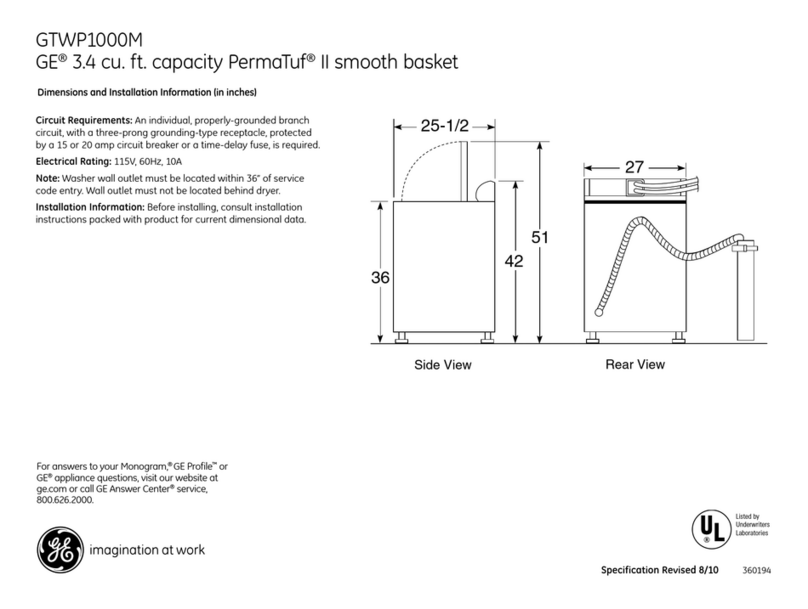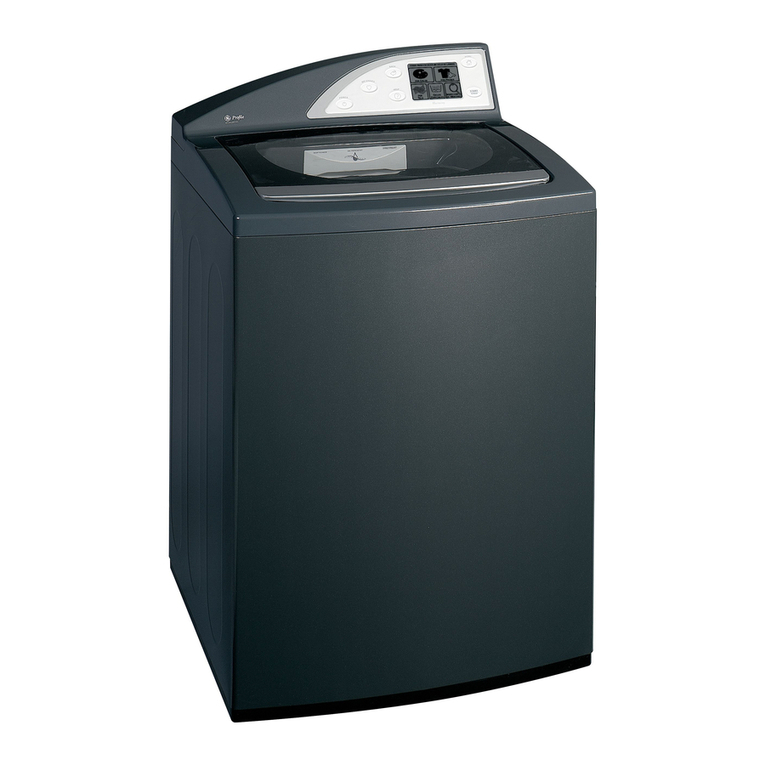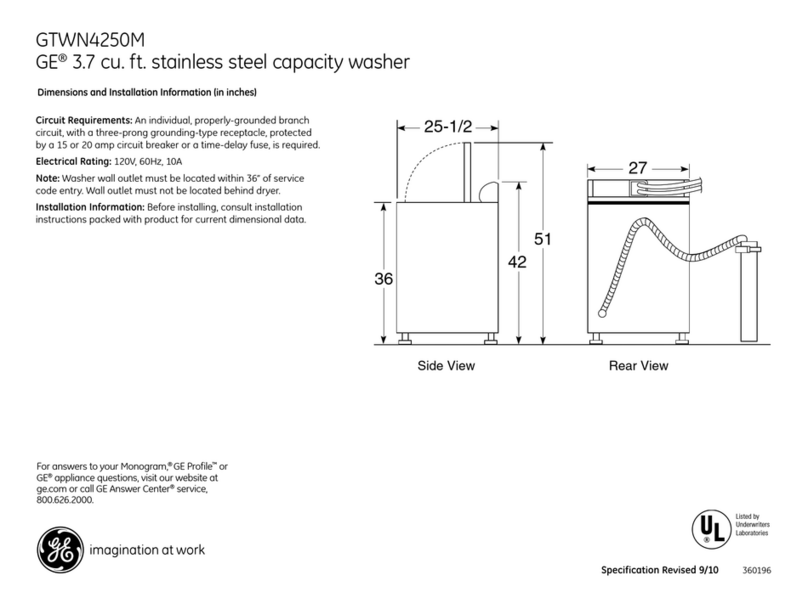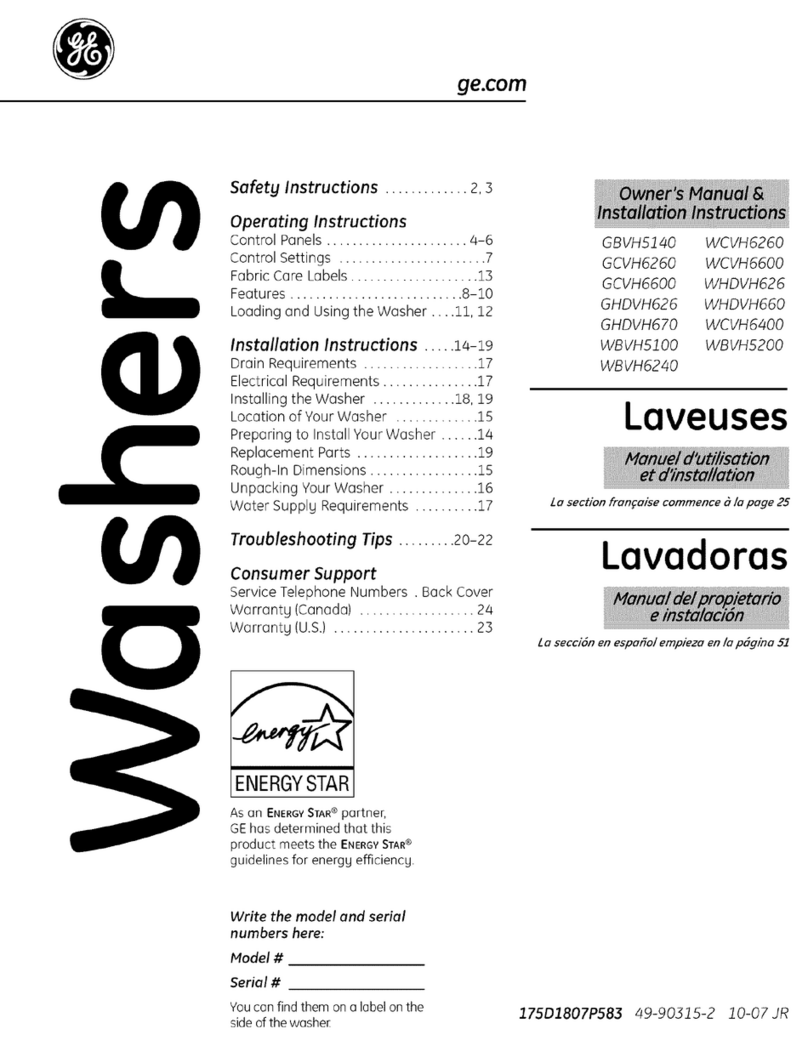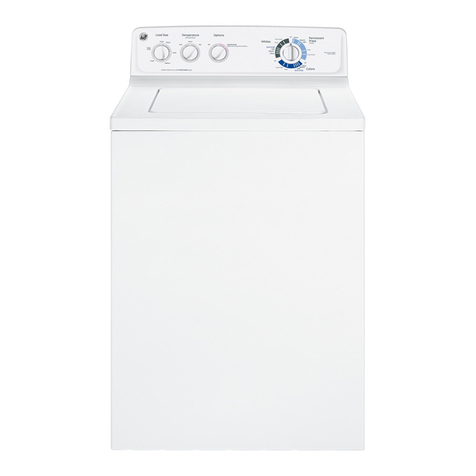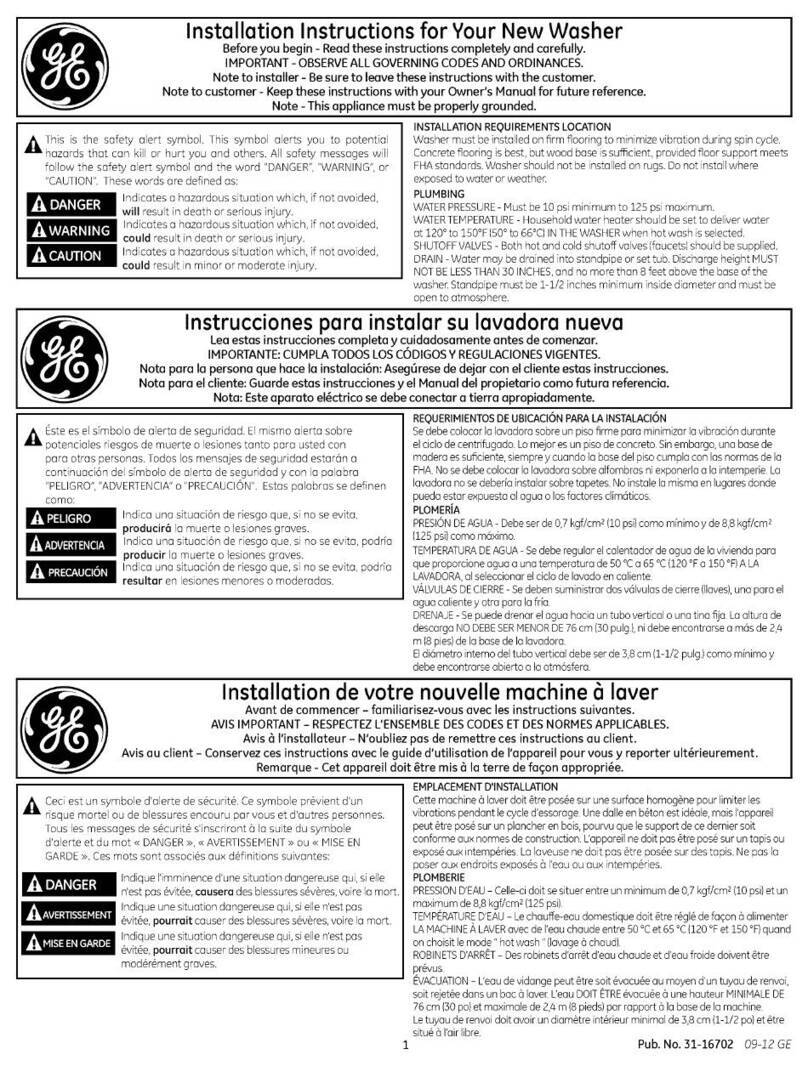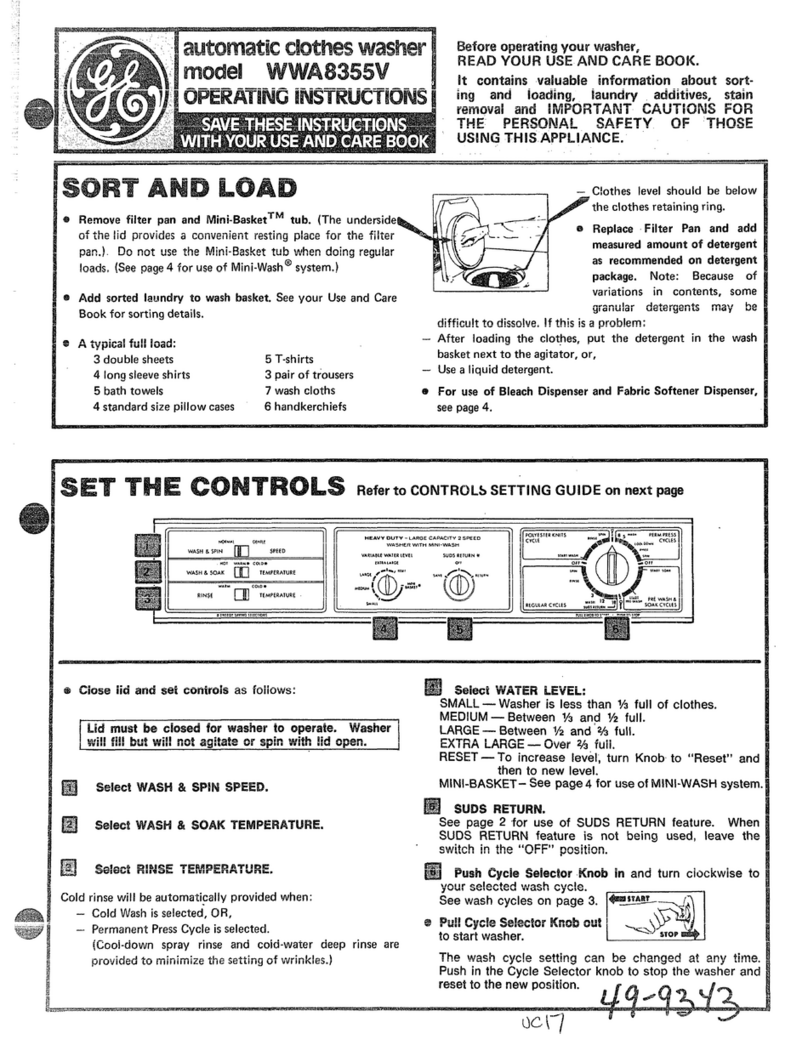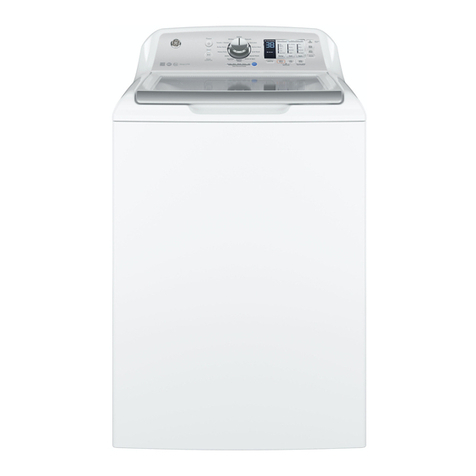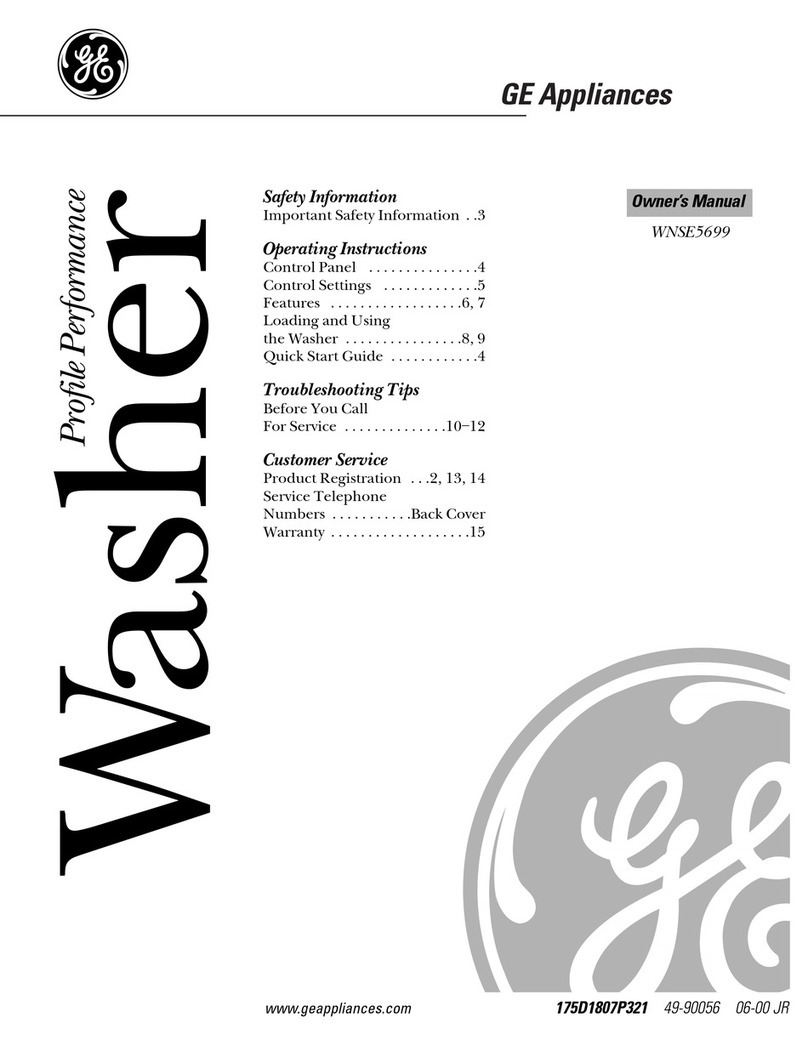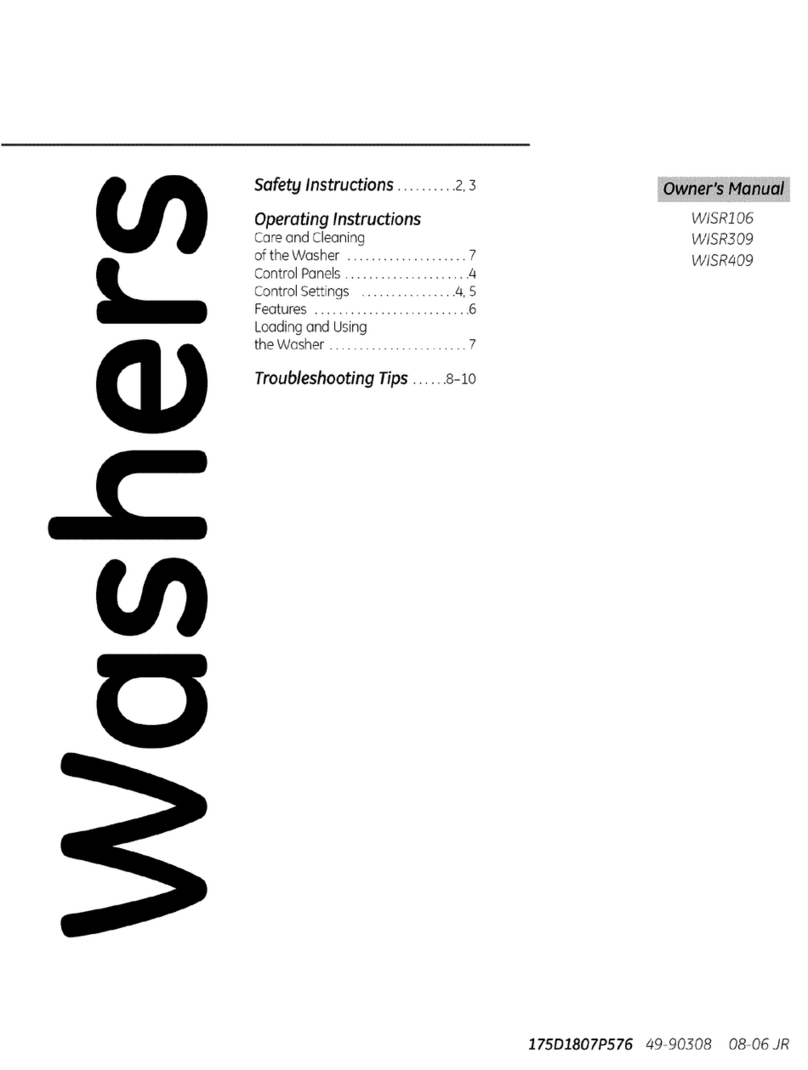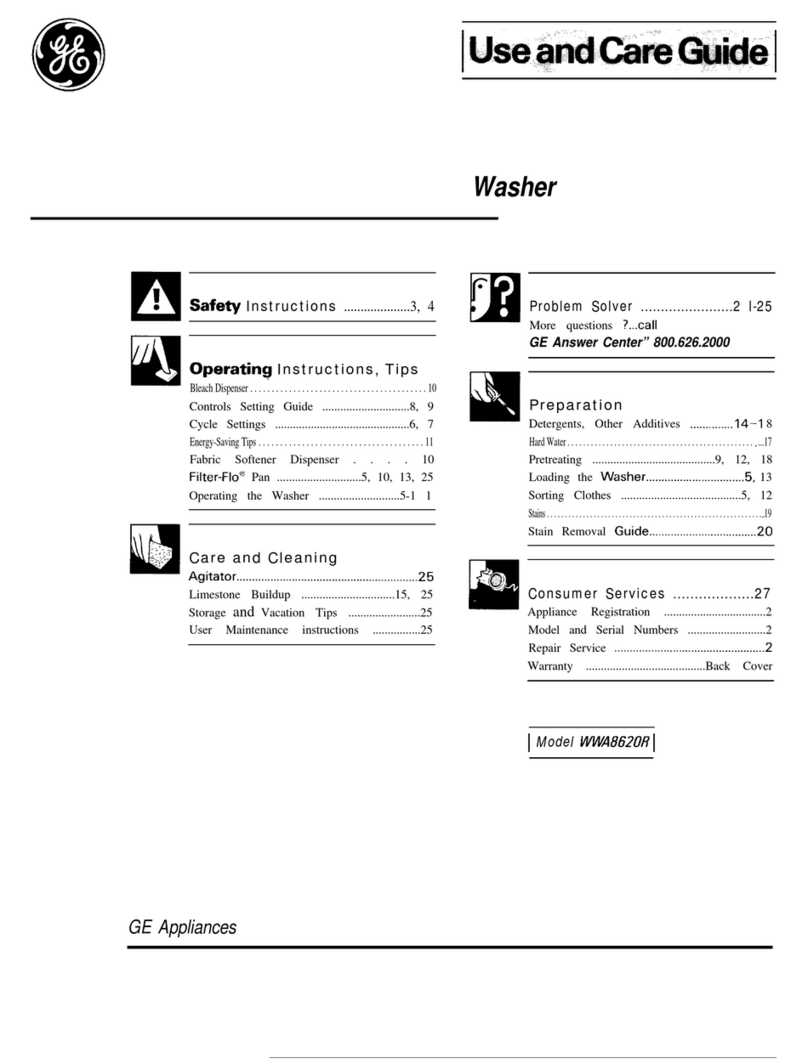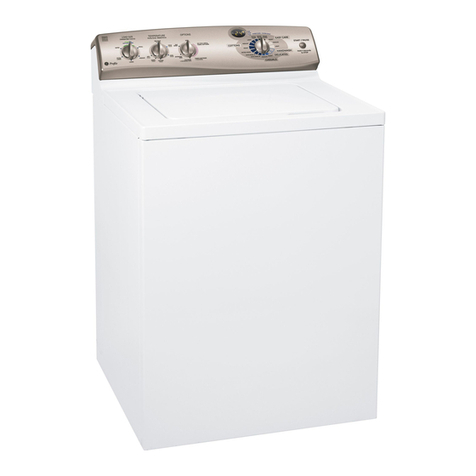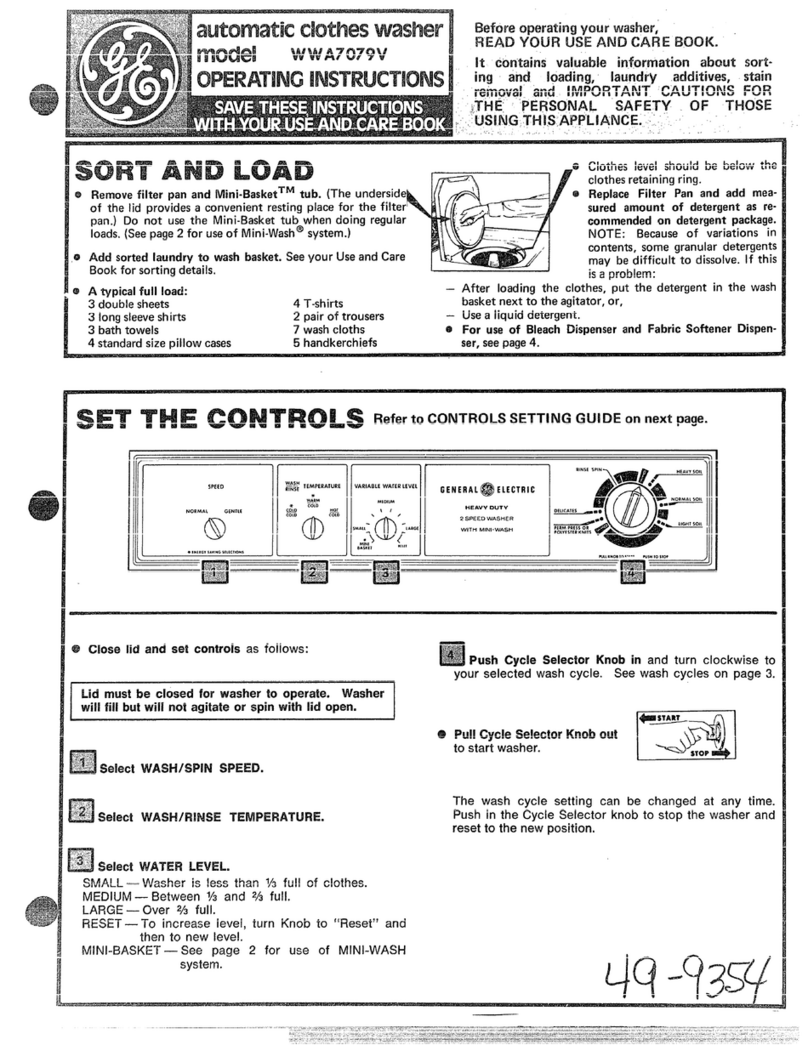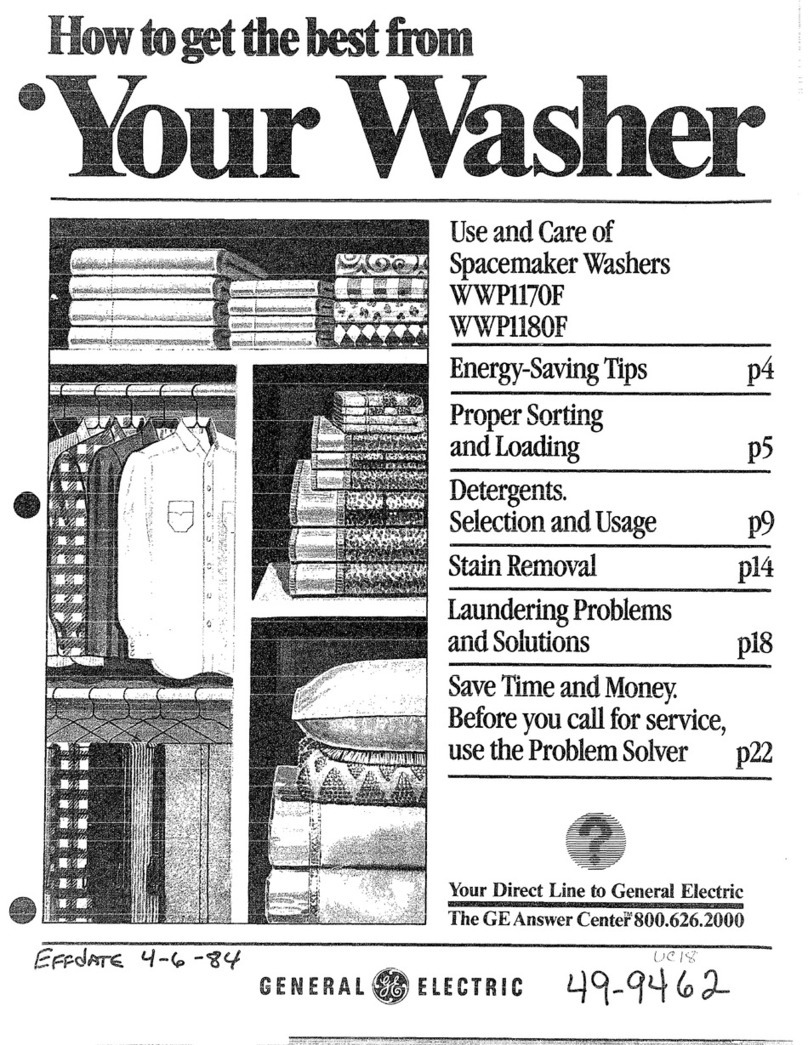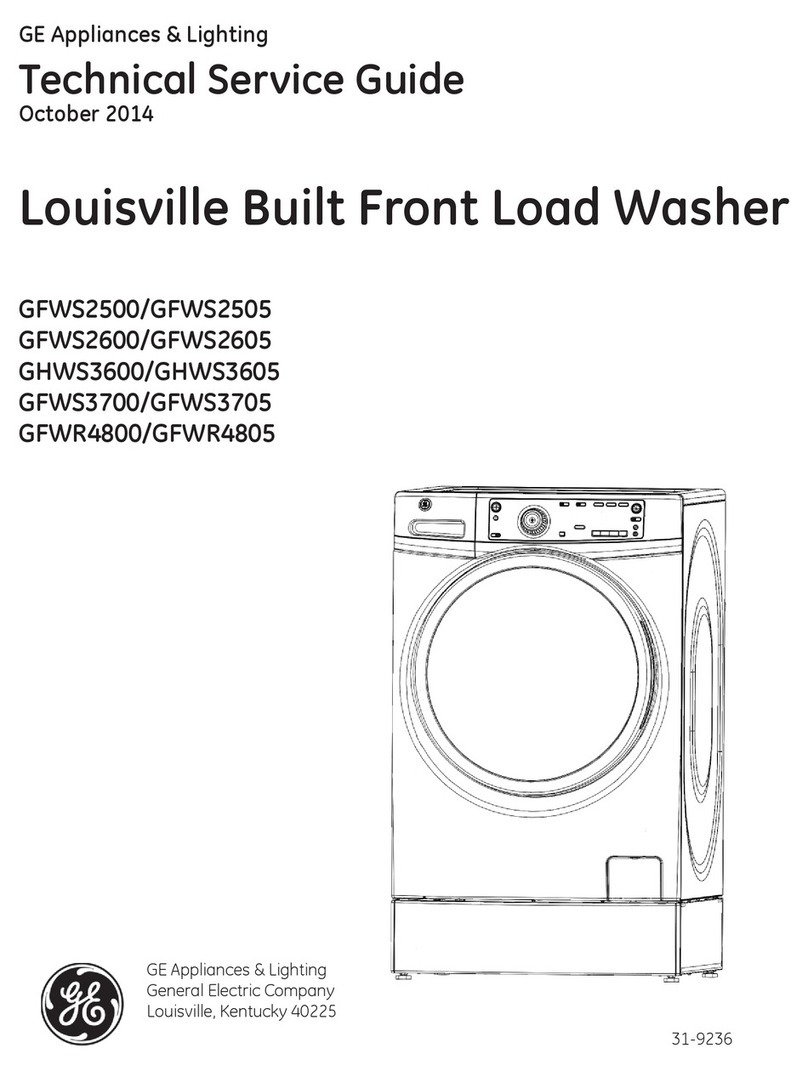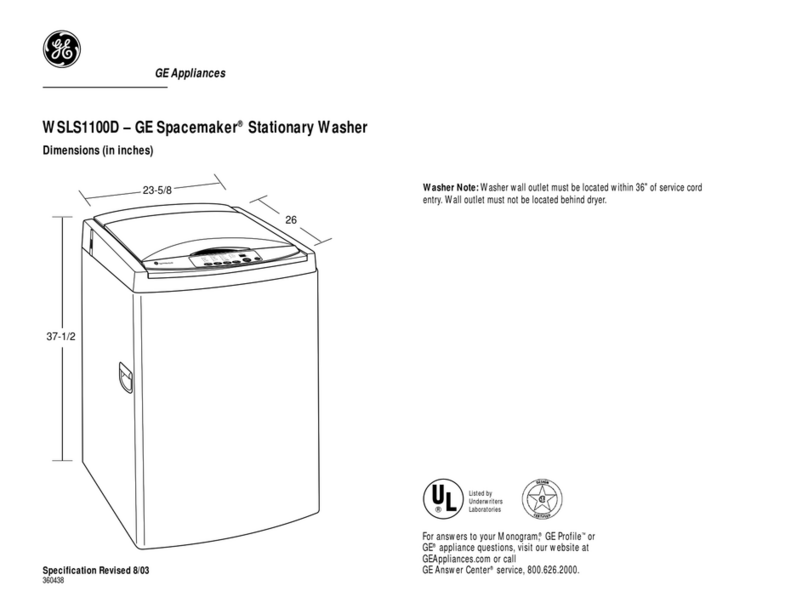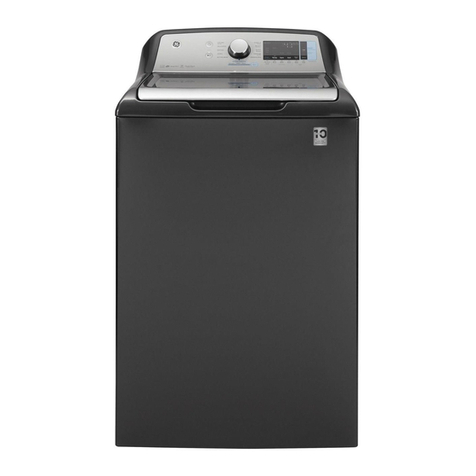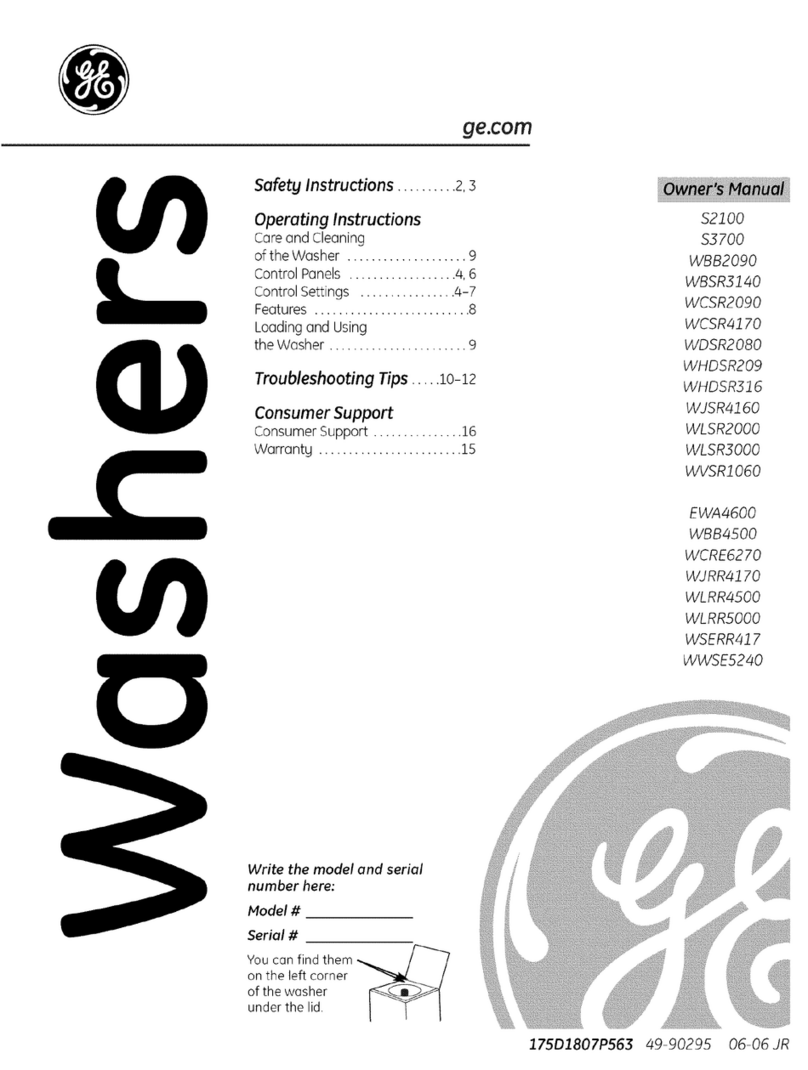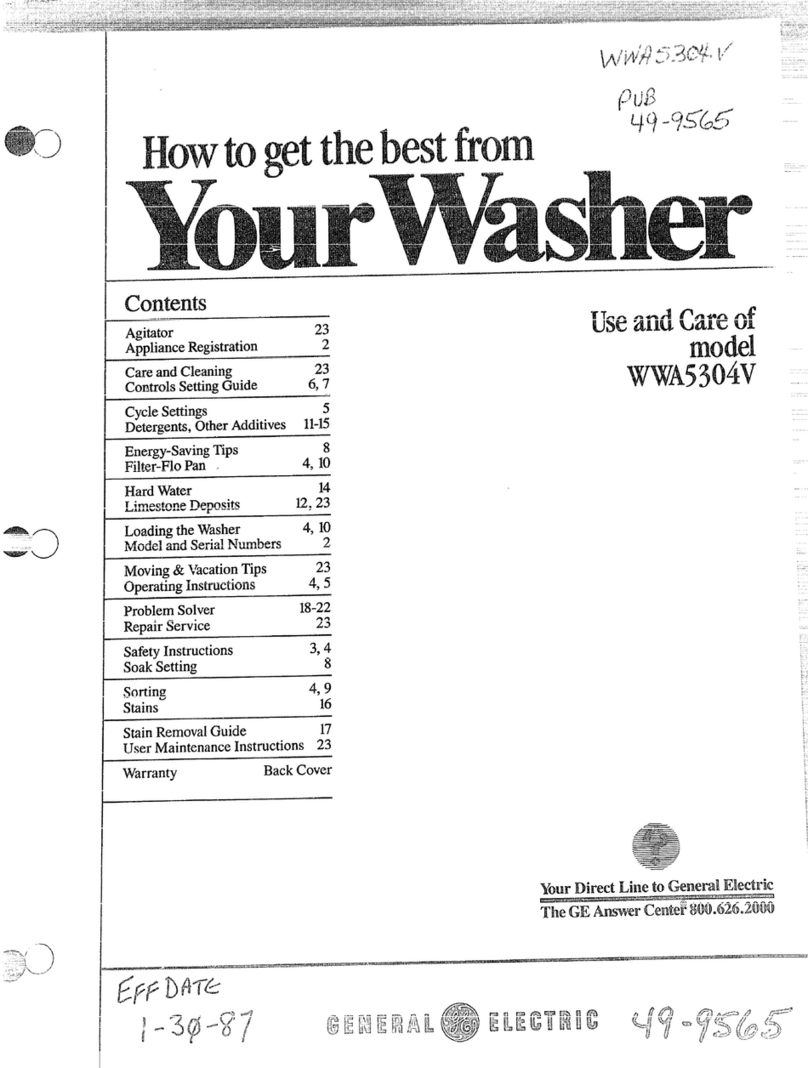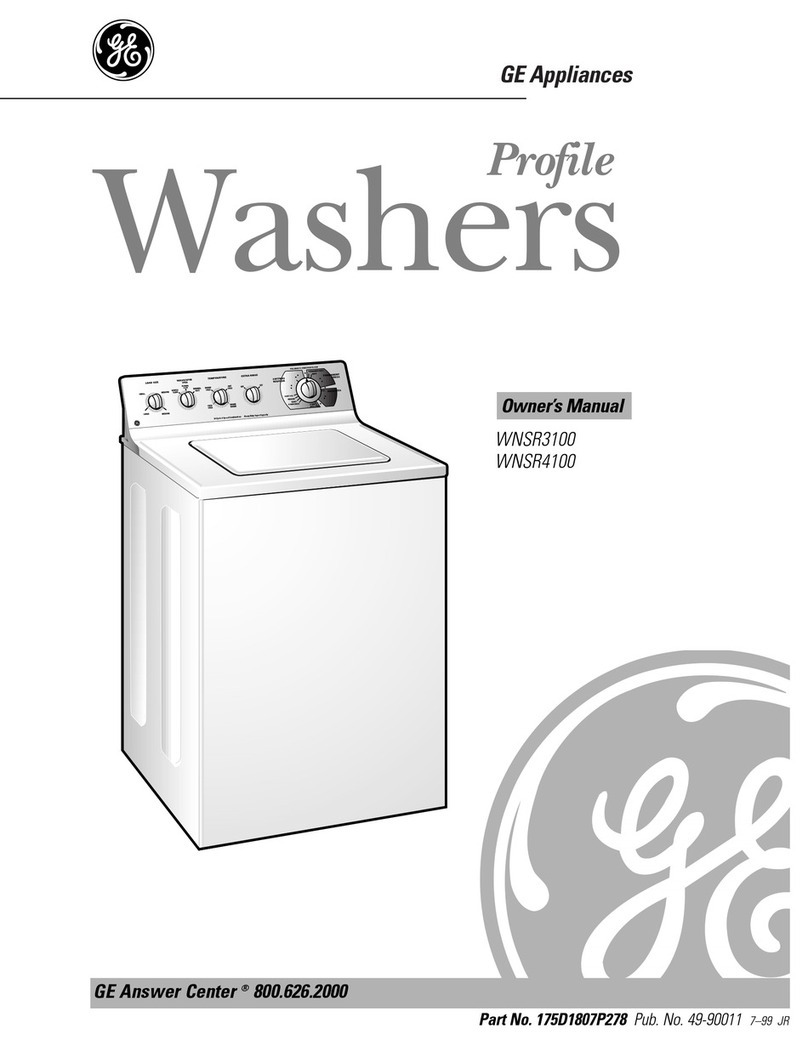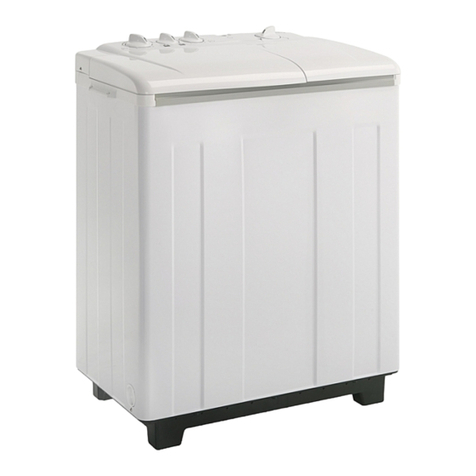
GEAppliances.com
BOptions
AutosoaN
This option begins with a brief agitation, soaks for a specified period of time, then moves through the rest of the cycle automatically. On
some models, this option is located on the Cycle Selector knob.
Extra Rinse
When you use extra detergent or bleach to clean heavily soiled clothes, use the Extra Rinse option to better remove additional residues.
Fabric Softener
Set this option when adding fabric softener to the washer or to select the enhanced Power Rinse.
NOTE: Do not use fabric softener dispensing balls with this washer. They do not work correctly in high efficiency washers.
Delay Wash
On some models, as the Delay Wash pad is repeatedly pressed, the delay time sets to 30 minutes, 1 hour, 3 hours, 6 hours, 9 hours, and
back to clear (0 minutes).
On other models, as the Delay Wash pad is repeatedly pressed, the delay time sets to 2 hours, 4 hours, 8 hours, and back to clear (0 hours).
For all models, if the Delay Wash pad is pressed for 3 seconds, it clears (regardless of the delay time).
Signal
Use the Signal pad to change the volume of the end of cycle signal. Press the pad until you reach the desired volume or off.
Settings
Individual settings for agitation (Soil), water temperature (Temp), and spin (Spin) can be set from the minimum (lowest in column) to
maximum (highest in column). In general, the higher up the column, the more energy will be used.
Load Size
– For convenience, best performance and optimal efficiency, select PreciseFill. This selection automatically provides the correct amount of water suited to
the size and type of load placed in the unit. NOTE:
The washer will not fill with water when PreciseFill is selected if the lid is opened.
– If you prefer to manually select the water level, select Small through Super. While PreciseFill is best for most loads and general washing, you may want to
manually select the load size for specialty items such as bulky, lightweight comforters or pillows, where you want to ensure a larger water level is applied.
Manual load size selections should be made for wet items placed in the washer, such as soaked towels or garments.
Power
Press to “wake up” the display. If the display is active, press to put the washer into idle mode.
NOTE: Pressing POWER does not disconnect the appliance from the power supply.
Start
Press Start to begin the cycle. NOTE: The lid must be closed for the washer to fill and the cycle to start. Pressing Start again will Pause the
cycle and the Cycle indicator light will blink.
To continue the cycle, press Start again or close the lid. If machine is paused more than 24 hours, the cycle will be cancelled. To stop the
cycle, hold the pad for 3 seconds. If water remains in the machine, select the Drain & Spin cycle to drain tub and spin water out of the
washer tub.
Raising the lid will stop agitation or spin action but does not pause the cycle.
eWash (on some models) or Cold Care (on some models)
When the eWash or Cold Care pad is pressed, the cycle changes to its most energy efficient settings and all of the eMonitor lights will light
to indicate that the most efficient settings are on. If you change settings, the number of eMonitor lights will decrease (or increase) to indicate
decreased or increased energy efficiency settings.
Display (on some models)
The display shows the approximate time remaining until the end of the cycle.
NOTE: The cycle time is affected by how long it takes the washer to fill. This depends on the water pressure in your home. The “smart” timer
“learns” the amount of time it takes to fill your washer and adjusts the total time accordingly.
In addition, this display will, “scroll” the washer status:
bALANCING Start of rebalancing cycle to redistribute clothes. Stops after rebalancing is complete.
dELAY When Delayed Wash is initiated. Replaced with estimated time when cycle starts.
End End of current cycle.
FILL For the first 45 seconds of a fill, the estimated end of cycle time is displayed. For the rest of the fill time, “FILL” is scrolled
until the fill completes.
LID Cycle stopped because lid is open. Close the lid.
PAUSE Cycle paused because the Start/Pause pad was pressed and the washer was set to Pause. Press Start pad again to
restart the cycle.
Indicator lights
Five LED lights indicate the current washer status moving from left to right as the cycle progresses.
C
D
E
F
5
G
H
I
